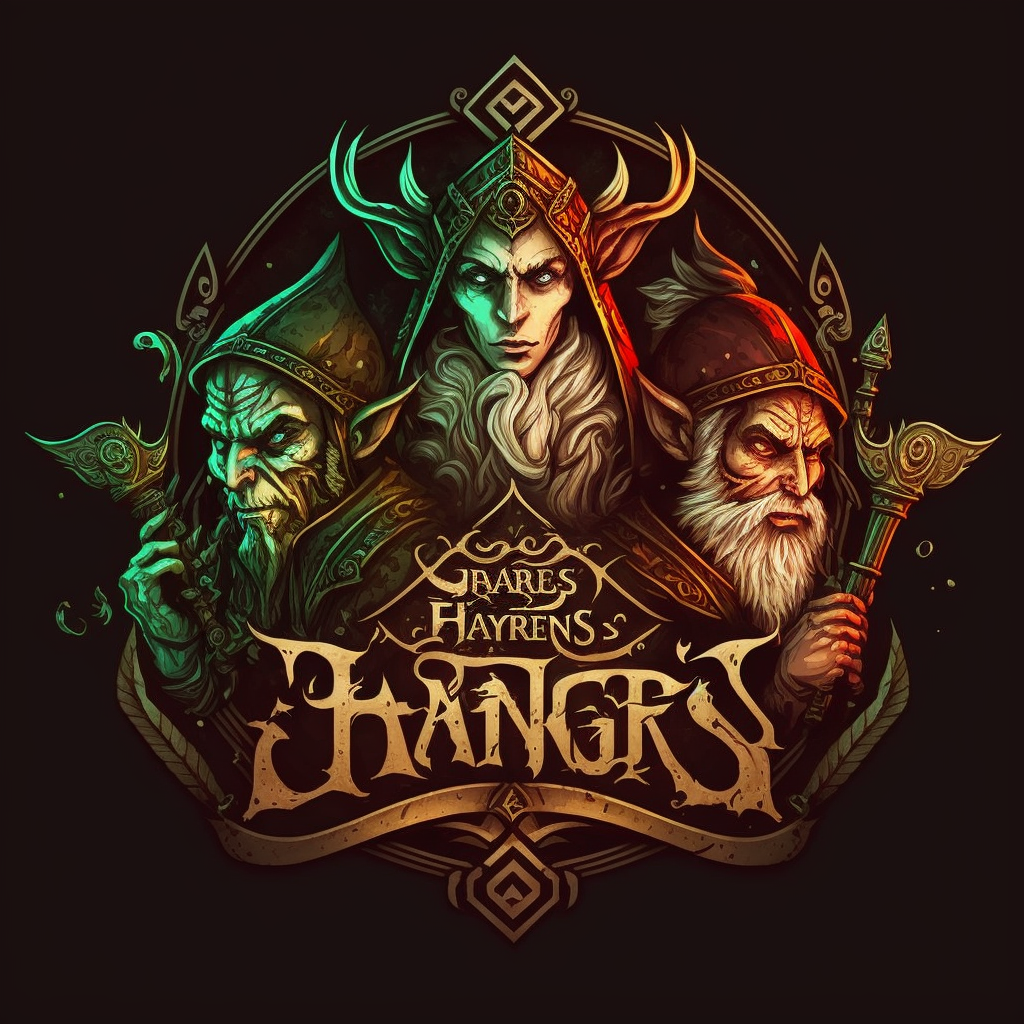Primarchs: Sons of the Emperor
Published on: July 18, 2025
The Sons of the Emperor: the Primarchs
In the sprawling expanse of the Warhammer 40,000 universe, amidst the
tumultuous currents of cosmic warfare and unfathomable power, stand the legendary figures known as the Primarchs.
Born of the Emperor of Mankind's ambitious vision and forged in the crucible of genetic mastery, these twenty
transhuman demigods were destined to shape the fate of humanity itself. Crafted in the late 30th Millennium,
the Primarchs were not mere mortals; they were paragons of martial prowess, intellectual brilliance, and
charismatic leadership. Each a masterpiece of genetic engineering, they embodied the pinnacle of human potential,
surpassing ordinary men in strength, speed, and intellect.

Intended by the Emperor to be the immortal generals and statesmen of his Great Crusade,
the Primarchs were bestowed with a divine purpose: to reunite the scattered remnants of humanity under the
banner of the Imperium. Yet, the fates of these demigods were forever altered by the sinister machinations
of the Chaos Gods. Snatched from the Emperor's grasp and scattered across the galaxy by the warp's capricious
currents, the Primarchs found themselves marooned on distant worlds, each facing trials that would shape
their destinies in profound and unexpected ways. Despite their godlike abilities, they remained bound by
the frailties of their humanity, their flaws serving as both a testament to their mortal origins and a
tragic impediment to their father's grand design.
The colossal scientific endeavor preceding the Unification Wars in the 30th Millennium,
known as the Primarch Project, remains shrouded in mystery. Perturabo's estimation of his birth year, 792.M30,
provides a rough timeline for the project's conclusion, although he referred specifically to his arrival on Olympia.
The method by which the Emperor forged 20 distinct superhuman genomes from his own enigmatic Perpetual genetic code,
bypassing cloning techniques, eludes modern Imperial understanding. The process involved two stages: initially,
the Emperor extracted a subset of his DNA, laying the groundwork for a pristine, undifferentiated primarch
gene-stock template. This template was then diversified into 20 separate genetic blueprints, each destined
to shape the individual primarchs. Decades later, during the Horus Heresy, a Raven Guard Apothecary and a Mechanicum
magos genetor scrutinized the original engineering of these genetic strands. Their analysis unveiled deliberate
gene deletions and the addition of non-Human DNA in certain samples. Notably, the genome of "Subject VI" contained
canine-like DNA, potentially shedding light on Leman Russ's wolfish traits and the feral mutations witnessed among
Space Wolves Astartes. Scholars speculate that beyond physical manipulation, the Emperor employed psychic sorcery
derived from the Warp to imbue his gene-sons with extraordinary abilities and charisma. Records reveal the
Emperor's journey to Molech during the Age of Technology, where he purportedly bargained with Warp entities
for knowledge crucial to the primarchs' creation. Alivia Sureka, a fellow Perpetual, witnessed this event
and was tasked with guarding the Warp Gate until the Emperor's return.

The primarchs' spiritual and physical engineering made them exceptionally charismatic but also
vulnerable to Chaos. Consequently, the Emperor employed intricate protective measures, inscribing arcane glyphs
on their gestation capsules and fortifying the gene-vault beneath the Imperial Palace with an unparalleled Gellar Field.
Despite these precautions, the Chaos Gods, threatened by the Emperor's vision of unity and progress, sought to thwart
the Primarch Project. Their malevolent intent jeopardized the Emperor's designs, setting the stage for a conflict
that would shape the destiny of the galaxy. The Ruinous Powers of Chaos, in a tumultuous event circa 792.M30,
orchestrated the abduction of the Emperor's nascent superhuman progeny from the gene-laboratories nestled within
what would eventually become the Imperial Dungeons of the Imperial Palace. A cataclysmic localized Warp disturbance
erupted within the gene vaults beneath the Himalazian (Himalayan) Mountains on Terra, the very sanctum where the
primarchs were undergoing gestation. Thrown into the swirling abyss of the Warp, the gestation capsules cradling
the Emperor's unborn sons were scattered across distant Human colony worlds, long forsaken during the tumultuous
Age of Strife. It is conjectured that this initial contact with Chaos sowed the seeds of corruption within those
primarchs who would later betray the Emperor and His Imperium. Whether the Emperor could influence this outcome
remains uncertain, yet each primarch found themselves stranded upon ancient worlds, isolated from the greater cosmos
beyond the stars. This devastating setback plunged the Emperor's meticulously crafted plans into uncertainty.
His vision of conquest hinged upon the leadership of his superhuman generals, now lost to the capricious whims of the Warp.
Yet, ever adaptable, the Emperor resolved to press on without the primarchs. Leveraging the genetic material extracted
from his progeny, the Imperial Biotechnical Division had already pioneered the creation of the first Astartes gene-seed.
Implanted into select warriors among His armies, these genetically engineered organs endowed the
recipients with enhanced physical and mental attributes akin to those of the primarchs. Thus emerged the Legiones Astartes,
the Space Marines, poised to reconquer the galaxy under the banner of the Master of Mankind, even in the absence of
their primarchs' guidance. Though these Astartes warriors were but echoes of their primarch progenitors, the technique
of augmenting Human physiology with additional organs enabled a degree of "mass-production." Where the Emperor's
twenty superhuman sons had taken centuries to develop, thousands of Astartes could now be engineered and trained
within a single Terran decade. This exponential increase in transhuman warriors provided the necessary force to
launch the Great Crusade in 798.M30. It's worth noting that the genetic modifications of the Adeptus Custodes, derived
in part from the undifferentiated primarch gene-stock, exhibit a complexity beyond standard Astartes gene-seed, containing
twelve additional elements. Rooted in the DNA of the Emperor Himself, the Custodian genetic code fosters an unparalleled
kinship with the Master of Mankind. Nevertheless, it remains a simplified iteration compared to the intricate genomes
of the primarchs, all derived from the pure primarch gene-stock template. Amidst the burgeoning dominion of the expanding
Human empire during the era of the Great Crusade, the Emperor harnessed His potent psychic abilities of foresight and
precognition to locate His scattered primarch sons, dispersed across the vast expanse of the galaxy, and reunite them
with their respective Space Marine Legions. Each primarch stood as both progenitor and patriarch to their Legion's Astartes,
embodying the essence of their Legion's temperament and martial ethos, serving as a living epitome of perfection and
strategic brilliance.

The triumphant return of the primarchs to their Legions marked the zenith of the Great Crusade, as thousands
upon thousands of worlds yielded to "Imperial Compliance," their conquest orchestrated by the newly united primarchs
and their formidable Space Marine Legions. Like colossi striding amidst the battlegrounds of the stars, the primarchs
wielded unparalleled power, their presence an irresistible force reshaping the course of galactic conflict. However,
despite their apparent supremacy and aura of immortality, the primarchs remained flawed beings, plagued by the same
imperfections that have long plagued humanity since its inception. Their dispositions often veered towards jealousy,
arrogance, and bitter rivalries, even extending to their relationship with the Emperor, their creator. The origins of
these flaws, whether stemming from their exposure to the corruptive influence of Chaos in infancy or merely intrinsic
to their human nature, remain veiled in uncertainty. Yet, it was ultimately these very flaws that precipitated the
cataclysmic events of the Horus Heresy, plunging the Imperium into ten millennia of strife, stagnation, and
unrelenting conflict. Following the rediscovery of Primarch Angron, the Emperor observed the profound alterations inflicted
upon him by the brutal cerebral cybernetic implants known as the Butcher's Nails, a cruel legacy from his homeworld
of Nuceria. In delving into the nature of this grim technology alongside the esteemed Mechanicum Techno-archaeologist
Arkhan Land, the Emperor revealed a detachment towards the primarchs, viewing them merely as instruments created to
serve humanity's cause. When queried about the primarchs' address of Him as "father," despite His purported lack of
emotional connection, the Emperor drew an analogy to the story of Pinocchio, elucidating that it was a natural inclination
for creations to perceive their maker as a paternal figure.
At the pinnacle of the Great Crusade, the Imperial Warmaster Horus succumbed to the seduction of Chaos,
persuading eight of his brethren primarchs to rebel against the Emperor and join him in a bid to overthrow the Master of Mankind.
Amidst the tumult of the Horus Heresy, brother turned against brother as the fallen primarchs marshaled their Traitor
Legions against their erstwhile allies who remained loyal; culminating in Horus himself engaging in a fateful duel with
the Emperor and the Blood Angels' Primarch Sanguinius during the climactic clash of the galactic civil war. At the zenith of
the climactic showdown amidst the Siege of Terra, upon Horus' flagship, the Gloriana-class Battleship Vengeful Spirit,
the Emperor confronted the Warmaster. Initially hesitant to unleash His full psychic might against His beloved son,
it wasn't until Horus gravely wounded the Emperor and slew Sanguinius that the Emperor unleashed the entirety of His
boundless psychic power. In a decisive stroke, the Emperor vanquished the Warmaster, annihilating even his essence
from the Warp, ensuring the Ruinous Powers could not resurrect their pawn. Following Horus' demise, most of the remaining
Traitor Legions fled into the dread depths of the Eye of Terror, where their primarchs would forfeit their humanity
to Chaos, ascending as Daemon Princes, each reigning over a sinister domain within the twisted confines of the corrupted realm.

Today, all but one of the primarchs find themselves either ensnared in the clutches of Chaos, shrouded in
mystery regarding their whereabouts, or have met their demise. As previously mentioned, Sanguinius met his end at the hands
of his beloved brother Horus during the harrowing Siege of Terra, where Horus, in turn, faced his demise at the hands of
their father, the Emperor. Ferrus Manus, primarch of the Iron Hands, met his fate on Isstvan V at the onset of the
Horus Heresy during the treacherous Drop Site Massacre. His demise came at the hands of his cherished brother and
closest friend, Primarch Fulgrim, who wielded the sinister Blade of the Laer, a weapon tainted by daemonic influence
that led to Fulgrim's fall to Chaos. Though rumors persist of Ferrus Manus possibly existing in a quasi-living state on Mars,
aided by the technological prowess of the Adeptus Mechanicus, both the Mechanicus and the Iron Hands vehemently refute such claims.

Over the ensuing millennium, the remaining loyalist primarchs either perished or vanished one by one.
Lion El'Jonson of the Dark Angels returned to find his homeworld, Caliban, in ruins, and led a relentless campaign against
the traitorous Fallen Angels, culminating in a cataclysmic event that left Caliban devastated and the Lion's fate uncertain.
While some speculate that he lies dormant within the depths of The Rock, others hold onto the belief that he will one
day return to lead the Dark Angels once more.
Jaghatai Khan of the White Scars disappeared while pursuing Drukhari raiders through a Webway portal,
rumored to have been captured within the twisted labyrinth of the Drukhari's domain. Leman Russ of the Space Wolves is
believed to have embarked on a quest to find a means to cure the Emperor or ventured into the Eye of Terror to confront
his traitorous kin, while Rogal Dorn of the Imperial Fists perished valiantly defending against the forces of Chaos
during the 1st Black Crusade. Roboute Guilliman of the Ultramarines narrowly survived a confrontation with Fulgrim,
only to be mortally wounded by a poisoned blade, yet he was resurrected after the fall of Cadia to lead the Imperium once more.
Vulkan's whereabouts remain a mystery, with some believing he perished on Istvaan V while others hold onto
the hope of his return with the discovery of nine relics scattered across the galaxy. Corvus Corax, tainted by guilt,
sought to rebuild his Legion's strength but inadvertently unleashed a curse upon his gene-sons, leading to his self-imposed
exile and eventual transformation into a shadowy entity within the Eye of Terror. Of all the primarchs, excepting those
missing or resurrected, only those consumed by the dark embrace of Chaos endure, their beings wholly corrupted by the
malevolent forces of the Warp.

The enigmatic veil surrounding the identities and fates of the two elusive "Lost Primarchs" shrouds them in mystery.
References to these absent figures emerge in the short story "The Lightning Tower," where Rogal Dorn alludes to their
absence within the Imperial Palace, suggesting a collective silence surrounding their tragic destinies. The Traitor primarchs'
statues in the tale remain veiled, leaving the ultimate fate of the second and eleventh primarchs unresolved, sparking
speculation about their posthumous mentions. In a conversation between Magnus the Red and Lorgar, it is revealed that both
Horus and Fulgrim pledged to uphold a solemn oath of silence regarding the lost brothers. As for the destinies of their
respective Space Marine Legions, the IInd and the XIth, conjecture by the Word Bearers hints at a surge in recruitment
within the Ultramarines following the expunging of the two primarchs from Imperial records. This suggests the potential
integration of some Astartes from the Lost Legions into the remaining Space Marine Legions, although uncertainties persist
regarding their ultimate fate.

Speculation abounds regarding the Emperor's intentions for the primarchs had His vision of a pacified
galaxy following the Great Crusade come to fruition. Beneath the Imperial Palace lay a hidden cavern, where 20 lavish
apartments awaited the primarchs, tailored to their colossal stature. While Corvus Corax briefly resided there,
the notion of all primarchs embracing a tranquil existence post-Crusade seemed improbable given their innate
predisposition for warfare and conquest. Nevertheless, the Emperor preserved this infrastructure and the Primarch
Project's knowledge, safeguarding dormant genetic samples with undisclosed purposes, hinting at potential applications
beyond warfare, possibly related to peace. The current existence of these facilities remains unknown in the 41st Millennium.
The original pure primarch gene-stock met its demise during the Horus Heresy, tainted by Chaos and subsequently
stolen by the Alpha Legion, adding another layer of mystery to the primarchs' legacy.




